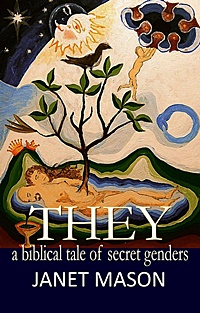I presented this reflection as part of the November 15 service at the Unitarian Universalist Church on Stenton Avenue in Philadelphia. To watch piece on video, click here.
Heroes, saints, and mythology all occupy the same space in my mind. Saints may be as old as the hills but they are a new category to me. Last year, I started reading about female saints at Catholic.com as research for a novel I just finished — titled Art, a novel of revolution, love and marriage. I was raised secular and was inspired to research the saints based on one of the conversations in the New UU, a group for new Unitarian Universalists held here at Restoration.
What I found on Catholic.com was fascinating. The female saints, in today’s lingo, are often differently gendered. Often they were martyred with their particular, also female, friends. Hmmm.
To give you an idea of the saints, I am going to read a short excerpt from my novel Art:
March wind gusted. Grace remembered that March thirteenth, just a few days away, was the feast day for Saint Grace. When she was nine, she learned about her name saint in preparation for her confirmation. Grace was mesmerized by the stories of the female saints. One escaped a violent marriage and became the patron saint of abused women. Another became engaged at the age of three and when the engagement was broken, was overjoyed to live a life of virginity.
The ones who were persecuted captured Grace’s imagination. She remembered looking at the images of martyrs holding tight to the stake where they would be burned, golden halos shining behind their heads. Saint Apollonia’s faith was so strong that she jumped into the flames.
…..
Grace did her essay on her name saint. Saint Grace lived in Spain where she died in three hundred and four A.D. …. If Spain had chilly March winds in the year three hundred and four A.D., it might have felt like this on the day of Saint Grace’s death. Grace remembered reading that Saint Grace was unmarried. She was arrested and tortured. Her breasts were cut off. She died in her prison cell from internal injuries. She was martyred in the Roman Empire’s Great Persecution.
The saints occupy a place in my mind that is as magical as it is necessary.
Imagine, for a moment, that we lived in a world with no strong female role models, such as the saints on Catholic.com. I, along with many others, would have to be the saints rather than be inspired by them.
And so I am thankful to the saints.
Almost every morning, as part of my yoga practice and Buddhist chanting practice, I reflect on what I have to be thankful for. I have a lot to be thankful for — including the fact that I am here at Restoration.
When Maria and I talked about today’s service, she asked me what it feels like to be a member of Restoration. I came to religion later in life — after fifty — and from a secular background. I never thought (even, or maybe especially, in my wildest dreams) I’d ever be a member of a church. Becoming a member of Restoration is an inclusion of my past. So many here have been in the various communities that I have long been a part of. It is also an expansion of my world. I am exposed to much more now — including the saints on Catholic.com — than I was before. And I feel connected to others in this Beloved Community.
I am thankful to my partner Barbara. Although she denies it — modestly, I like to think — she is my anchor. And all that she does to care for us — and our cats, Felix and Princess Sappho — makes everything possible.
At Restoration, the pews (and the seat behind the curtain and in front of the piano) are full of living saints who make it possible for us all to be here. I am thankful for each and every one of you for all that you do and most of all for being yourself and for being here.

Princess Sappho (who sits on my lap as I write)
Read Full Post »


